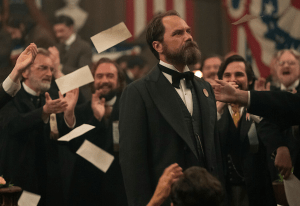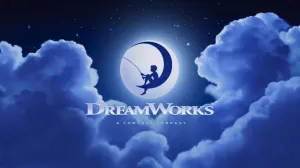
The Immortal Hulk #19 delivered one of the most shocking cliffhangers in comics this year. It’s not the shock that makes this particular page turn resonate, but what is suggested about one character, Betty Ross, by the entire issue including the aforementioned twist. Immortal Hulk has received widespread critical acclaim, along with some impressive sales figures, but it’s not a book solely focused on its eponymous anti-hero. It provides a thematically complex look at all of Hulk’s history and his closest allies. What writer Al Ewing and artist Joe Bennett suggest about Betty Ross in this issue is worthy of some critical examination. However, that also means revealing some major spoilers for Immortal Hulk, so…
Videos by ComicBook.com
*SPOILER WARNING*
The most recent issue of Immortal Hulk ends with the Hulk seemingly dead, his arms and eyes melted by Rick Jones (in his Abomination form) and his heart being eaten by Betty Ross (in her Red Hulk-Harpy form). It’s a grisly scene featuring two of Hulk (and Bruce Banner’s) closest allies standing over his corpse. However, before unpacking what this moment means, it’s worth looking back at Betty Ross’ career in superhero comics

The Past
Betty Ross first appeared, alongside the Hulk, in the pages of The Incredible Hulk #1 in 1962 and, like all characters present during the earliest years of Marvel Comics, has far too much history to recap without a complete Wikipedia entry. However, focusing on the highlights of Betty Ross’ career in superhero comics provides a clear narrative.
She began as one of the relatively more decisive female characters from early Marvel, but that “relatively” is important as she and others, like the Invisible Girl and Wasp, were all portrayed as consistently deferring to the men in their lives. She was primarily defined as General Ross’ daughter and Bruce Banner’s girlfriend. This would continue for decades to come. Betty’s relationship to Bruce was central to her role in comics, as they were married, then divorced, and even suffered a miscarriage due to editorial fiat. She was eventually killed by the Abomination in order to hurt the Hulk (a classic case of “fridging”).
When Betty Ross has gained powers, it has largely been in relation to creating challenges for the men in her life. M.O.D.O.K. transformed Betty into the Harpy, a violent, gamma-infused being who represented a stereotypical vision of “a woman scorned.” In this mode she was an antagonist to be defeated and saved, once again not a character with her own motivations and central narrative. It was only in the past ten years that Betty was given an opportunity to take control of her narrative in the form of Red She-Hulk, joining various teams and taking over the Hulk series for a while. But this was retconned as well, with Betty seeking treatment for her “insanity” and being “cured” of her powerful alter-ego to once again disappear into the background.

The Present
Reflecting on almost 60 years of Betty Ross stories in aggregate, it’s difficult to not see her tale as a metaphor for women in superhero comics. Relegated to the sidelines, defined by relationships to powerful men, and regularly robbed of their own powers and series. While gender representation in comics has improved a lot since the 1960s, Betty Ross appears to always be drawn back to where she began. That’s the context that informs her transformation and actions in The Immortal Hulk #19, an issue she narrates as the action primarily follows her (as the fused Red She-Hulk Harpy) while Hulk’s story plays out in the background.
Betty’s transformation into the Red She-Hulk Harpy was spurred by the very sort of actions that make her meta-narrative so tragic. After attending her father’s funeral, she is visited by Bruce Banner as he struggles with his own conflicts. All of her attention and efforts are once more dictated by the two most powerful men in her life. Then she is shot and killed by Bushwhacker as he attempts to assassinate Banner, an accidental victim of the Hulk’s and a fridged motivation for another fight.
Given her subsequent transformation and actions, however, it appears that the subtext of this death in Immortal Hulk #14 was meant to encapsulate her history. Betty Ross does not stay dead for long, but quickly returns in Immortal Hulk #18, where she is discovered by journalist Jackie McGee who leads her to find the Hulk.
The issue opens with Betty Ross’ narrating: “This is me. This is me. This anger is me. This rage is me. This violence. Is me.” A monologue accompanied by a butterfly breaking free of a spider’s web. These establishing pages provide a framework in which Betty Ross is expressing her identity, an identity that has been symbolically trapped by a complex web (or trap) of outside events and characters preventing it from flying. Betty emphasizes seemingly negative or typically non-feminine traits as well. Fear, pain, and a lack of kindness are also mentioned, before she arrives at a thesis. As Betty begins to inflict violence upon a group of mercenaries, she declares, “I am not your soul mate. Not your friend. I am not for you at all.” She is focused on her independent identity and escaping the trap of being defined by men like Bruce Banner and General Ross. She continues to identify her own, distinct power when she says, “I have wings of my own. And fangs. And talons.”
This is a climax in a meta-textual tragedy. Joe Bennett embeds panels of Betty’s past roles and appearances amongst those of her current power in a carefully constructed grid, trapping them inside frames as the current Betty acts in freed splash panels. All of the rage and violence on display are not simply a monster acting out, like the original Harpy, or caused by vaguely-defined insanity, like Red She-Hulk. This is a response to years of being trapped in the narrative’s of others and a refusal to continue in that role. Ultimately, this is what explains her choice to cut open Hulk and eat his heart on the final page. Both Betty and readers must acknowledge that as long as Hulk exists, there is a likelihood that Betty will be defined purely by her relationship with him, once again.

The Future
The final page of Immortal Hulk #19 is a cliffhanger and a climax. Just like in a Shakespearean tragedies, there is more story to be told after events collide and things fall apart. This one issue serves as a poignant thesis on the place of so many women in superhero comics, and a cathartic release of that anger. Yet now that Betty has displayed her power and stated her identity in this moment, there follows a natural question: What’s next?
This sets up even greater stakes for The Immortal Hulk as it continues. How will Betty retain her autonomy in this story? How will her role here and at Marvel Comics change? Can this moment mark a permanent change or is it doomed to be a righteous, but futile moment of rage? While the answers to all of these questions are uncertain, Ewing and Bennett have set the stage for one of the most powerful stories in Hulk history, one that should not be defined by the Hulk.








